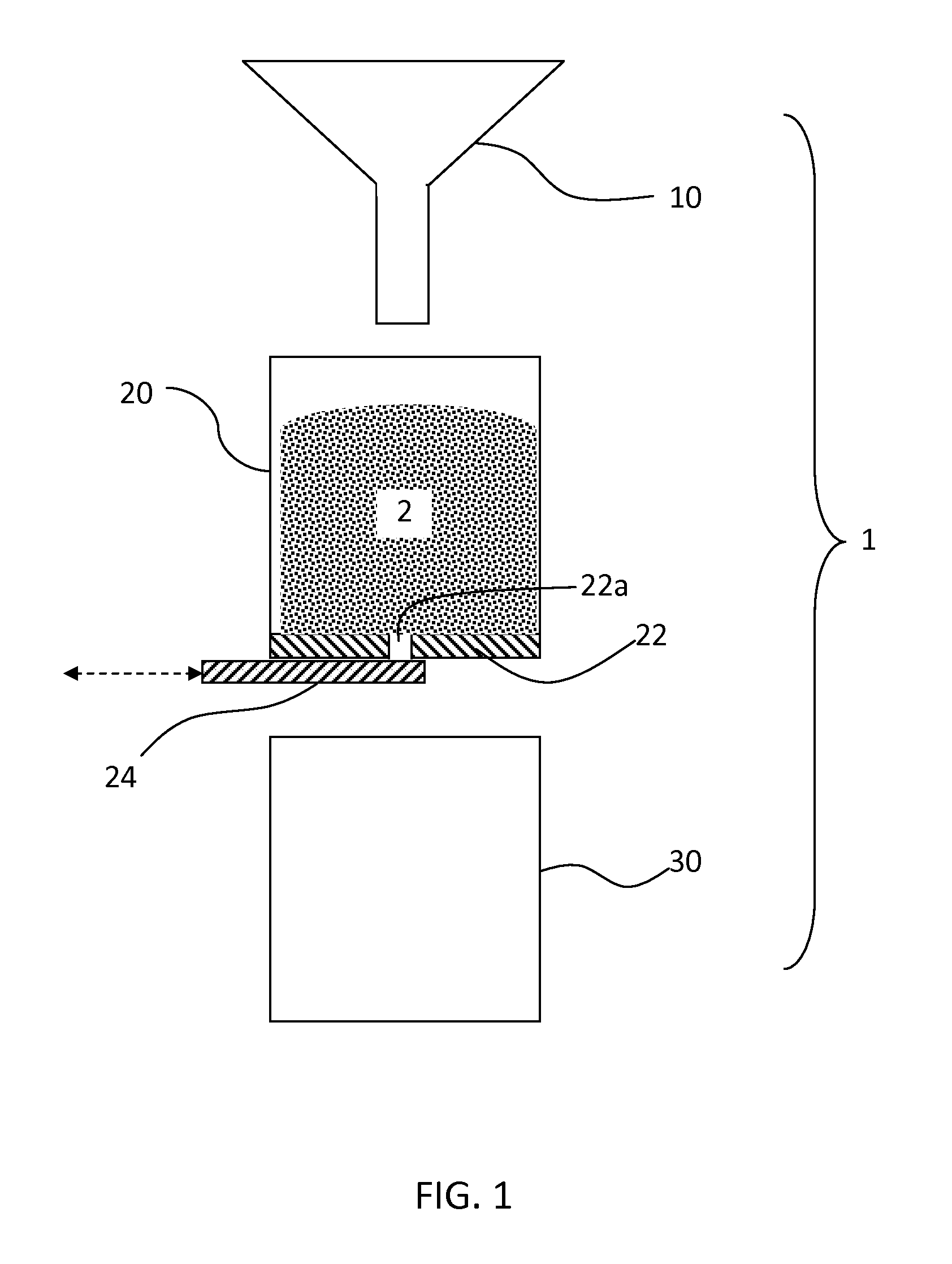Two-stage neutralization process for forming detergent granules, and products containing the same
a technology of neutralization process and detergent granule, which is applied in the direction of detergent powder/flakes/sheets, detergent compounding agents, inorganic non-surface active detergent compositions, etc., can solve the problems of significant increase in capital and processing costs, difficult processing of anionic surfactants in the paste form, and limited degree of neutralization from the dry neutralization process
- Summary
- Abstract
- Description
- Claims
- Application Information
AI Technical Summary
Benefits of technology
Problems solved by technology
Method used
Image
Examples
example i
[0082]An aqueous surfactant acid precursor, HLAS, having an activity of 97%, with 1% free water, 1% H2SO4 and 1% miscellaneous, is pumped via a positive displacement pump into a static mixer at the rate of 3300 kg / hr. A caustic solution, NaOH, having an activity of 50%, is also pumped into the static mixer at the rate of 120 kg / hr. The mixture after static mixer is pumped into a Lodige CB 75 at a rate of 3420 kg / hr. At the same time, a powder stream containing sodium carbonate is also fed into Lodige CB 75 mixer at a rate of 6.5 ton / hr. Also flowing into the same mixer are two streams containing the recycle of the classification of the agglomerates, one containing wet coarse particles and the other dry fine particles. The agglomerates leaving the Lodige CB75 mixer are feed into a Lodige KM 4200 mixer. After that, the agglomerates are feed into a fluid bed drier with air inlet temperature range from 90 C to 140 C. The air inlet temperature and air flow are adjusted so that the agglom...
example ii
[0083]An aqueous surfactant acid precursor, HLAS, having an activity of 97%, with 1% free water, 1% H2SO4 and 1% miscellaneous, is pumped via a positive displacement pump into a static mixer the rate of 3300 kg / hr. A caustic solution, NaOH, having an activity of 50%, is also pumped into the static mixer at the rate of 180 kg / hr. The mixture after static mixer is passed through a heat exchanger to reduce the temperature to 70 C. Then the mixture is pumped into a Lodige CB 75 at a rate of 3480 kg / hr. At the same time, a powder stream containing sodium carbonate is also fed into Lodige CB 75 mixer at a rate of 6.5 ton / hr. Also flowing into the same mixer are two streams containing the recycle of the classification of the agglomerates, one containing wet coarse particles and the other dry fine particles. The agglomerates leaving the Lodige CB75 mixer are feed into a Lodige KM 4200 mixer. After that, the agglomerates are feed into a fluid bed drier with air inlet temperature range from 9...
example iii
[0084]An aqueous surfactant acid precursor, HLAS, having an activity of 97%, with 1% free water, 1% H2SO4 and 1% miscellaneous, is pumped via a positive displacement pump into a static mixer the rate of 330 kg / hr. A caustic solution, NaOH, having an activity of 50%, is also pumped into the static mixer at the rate of 10 kg / hr. The mixture after static mixer is pumped into a water jacketed storage tank with the temperature of the jacket controlled from 50 C to 80 C. 22 kg sodium carbonate powder material is added into a batch agglomeration ploughshare mixer. 8 kg HLAS / NaOH mixture is then pumped via a positive displacement pump into the ploughshare mixer at 2 kg per minute rate. The liquid mixture is added onto the chopper location. After liquid mixture dosing, stop the mixer, then add another 0.07 kg zeolite into the batch mixer. Continuously run the mixer for another 2 min. The final product is a free flowing detergent granule. The partial neutralization achieved during first mixin...
PUM
| Property | Measurement | Unit |
|---|---|---|
| mean particle size | aaaaa | aaaaa |
| mean particle size | aaaaa | aaaaa |
| mean particle size | aaaaa | aaaaa |
Abstract
Description
Claims
Application Information
 Login to View More
Login to View More - R&D
- Intellectual Property
- Life Sciences
- Materials
- Tech Scout
- Unparalleled Data Quality
- Higher Quality Content
- 60% Fewer Hallucinations
Browse by: Latest US Patents, China's latest patents, Technical Efficacy Thesaurus, Application Domain, Technology Topic, Popular Technical Reports.
© 2025 PatSnap. All rights reserved.Legal|Privacy policy|Modern Slavery Act Transparency Statement|Sitemap|About US| Contact US: help@patsnap.com


